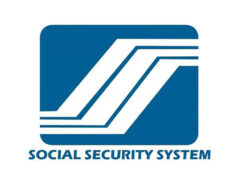ANGELES CITY- This city’s tricycle manufacturers, franchise holders and drivers had better familiarize themselves with ergonomics.
Newly installed Mayor Carmelo “Pogi” Lazatin Jr has it in mind, to cover about 3,000 local “trikes.”
“I myself cannot fit into one (tricycle),” Lazatin said during a recent forum with the Capampangans in Media Inc. (CAMI) at Clark freeport.
It was his way of saying that he wants tricycles, specifically their sidecars, to be redesigned in ergonomic way both for convenience and safety.
Ergonomics, says Wikipedia, is the process of designing or arranging workplaces, products and systems so that they fit the people who use them.
“Most people have heard of ergonomics and think it is something to do with seating or with the design of car controls and instruments – and it is… but it is so much more. Ergonomics applies to the design of anything that involves people – workspaces, sports and leisure, health and safety,” it said.
At present, sidecars of tricycles in most parts of the country look like cramped spherical contraptions designed for small people. Tall tourists are seen riding them with their heads protruding outside because of low roofing. The seats are also structured in a way that discomforts the spine.
Motorists have also complained that at night, especially in unlighted roads, the sidecars turn virtually invisible and thus pose serious danger to both motorists and pedestrians.
A few years ago, Mabalacat City officials also passed regulations on the height of tricycle sidecars, but implementation of the regulation seemed to have been in the backburner.
With both locals and tourists, including tall Caucasians, patronizing tricycles, at times for lack of option, Lazatin wants a redesign of sidecars which, he noted, would cost but would be worth the safety and convenience of all sectors in the years to come.
Only recently, Interior and Local Governments Sec. Eduardo Ano ordered tricycles off major roads nationwide, but his order seemed to have been totally ignored by local government units, as the growing number of tricycles have overtaken jeepneys as “imperials of any road.”
Latest figures on the number of tricycles here were not immediately available, but in March last year, former mayor Edgardo Pamintuan was reported to have issued 3,000 fare matrix copies for pasting on local tricycles to standardize fares.
Way back in 2012, it was estimated that there were about 658,000 tricycles in the country and this number seemed to have multiplied substantially since then.
Magna carta
The Bill of the Magna Carta for Tricycle Drivers and Operators Act of 2018 has remained frozen in Congress. The proposal sought “to provide a uniform set of requirements and reasonable fees that shall apply to all local government units in relation to their duties and tasks as regards their supervision and regulation of the operations of tricycles in their respective jurisdictions.”
Even earlier in the 16th Congress House Bill 6237 was filed by Quezon City Rep. Alfredo Vargas noting that tricycles, as of 2012, numbered about 650,000 nationwide or about 68 percent of the for-hire vehicle population.
In his proposal, he noted that the number of tricycles operating in the country “ has triggered problems including environmental degradation amid statistics that motorcycles are responsible for 45 percent of all volatile organic compound emissions which destroy the ozone layer and worsen the greenhouse effect.”
“Another issue that the tricycle sector faces is safety. Tricycles are perceived to be more accident prone than four wheeled vehicles. This is due to the instability of the sidecar attached to motorcycles which serves as passengers’ seat.
In Metro Manila, passenger tricycle injury ranks fourth in causing motor vehicle injuries.
Way back in 1985, former Pres. Marcos issued Letter of Instruction No. 1482 directing the “legalization of colorum motorized tricycles”. The measure was crafted in recognition of the “role of the tricycles as the principal mode of public transport especially in non-urban areas”. As such, the government tasked the local governments to regulate the tricycles.
Up until the enactment of the Local Government Code in 1991, the regulation of tricycles had been left to the judgment and discretion of local government units. As of today, the regulation of the operation of tricycles and the granting of their franchises are carried out by the LGUs through their respective sangguniang bayan or panglungsod, subject to the guidelines prescribed by the Department of Transportation.
In reality, however, anarchy seems to be the predominant principle reigning among tricycle drivers in many parts of the country, including this city.





